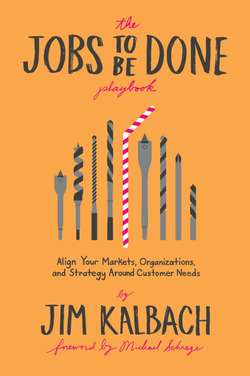Читать книгу The Jobs To Be Done Playbook - Jim Kalbach - Страница 35
На сайте Литреса книга снята с продажи.
Form a Hypothesis About the Process and Circumstances
ОглавлениеIn a final step, start exploring the process and circumstances. You may be able to intuit some of the stages in executing the job based on existing knowledge. Try making assumptions about the sequence of stages the performer may go through. This will help guide your discussion with interviewees. But be prepared to adjust your hypothesis with new information that you’ll encounter through field research.
Similarly, you may know some of the circumstances in advance. Have a conversation with your team about these to understand what you might need to probe during interviews. Make assumptions initially, but be ready to update them later after you complete your research.
Primary circumstantial factors may also influence the scope of your main job. For example, let’s say you are focused on how people get breakfast. The job get breakfast might be too broad. If getting breakfast on a commute to work is your real focus, you can frame it as get breakfast on the go. Again, start broadly and qualify the main job (e.g., with on the go) as needed. Decide as a team what the best expression of the main job is.
Use the JTBD canvas from the previous chapter to discuss the main job, performer, circumstances, and process. Display the canvas on a large screen for everyone to see or print a poster-sized version of it to hang on the wall. This not only gets everyone thinking about a job to be done and its parts, but also helps explain the framework and labels you’ll be using. Hypothesize together to start speaking the language of JTBD.
